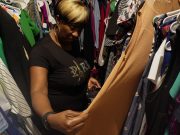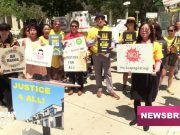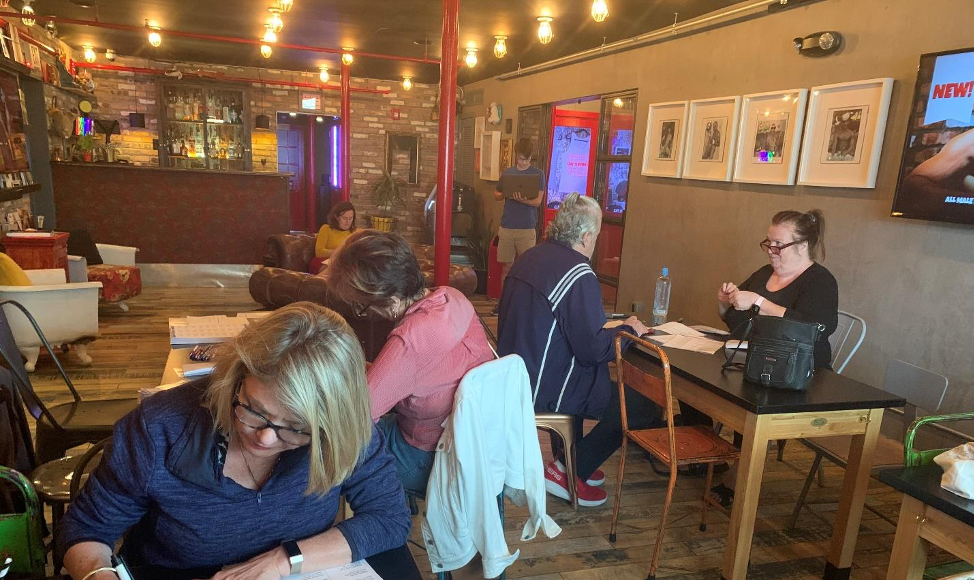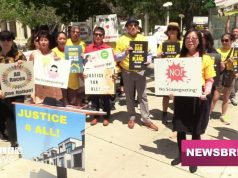More than 7 million votes have been cast in Florida so far, and more than 285,000 of those are mail-in ballots by voters between 18 and 29, according to a public dashboard run out of the University of Florida using data from the Florida Department of State.
However, data from previous elections show that mail-in ballots from that age group are more likely not to be counted, particularly in Miami-Dade County. (To check whether your ballot has been accepted in Miami, click here.)
A recent study from ACLU Florida found that young voters, particularly from racial and ethnic minorities, were “at least twice as likely” to have their vote by mail ballots rejected than older, white voters in Florida during the 2018 midterm elections.
That year, 9,371 vote-by-mail ballots cast by young voters were not counted statewide. To put that number in perspective, the razor-thin U.S Senate race between Rick Scott and Bill Nelson was decided by 10,033 votes.
As a result, local and statewide organizations are working to inform young and student voters about the proper steps when filling out their ballots and reminding voters to follow up with their local Supervisors of Elections to ensure votes were counted.
Isabel Muir, a coordinator for the Florida Student Public Research Interest Group’s New Voter Project, said that the two common reasons why ballots are rejected are because they were not signed or the signature does not match the one on file.
Other reasons like not using blue or black pen ink to fill out the ballot or writing on the ballots inappropriately may cause it to be rejected.
She said her non-partisan organization focuses on education: walking them through the steps from registration to voting and making sure it was properly counted.
Abel Iraola, the press secretary for NextGen Florida, said that the organization was participating in a ballot curing program to help fix the mail-in ballots of young voters that were being rejected.
He said 2,666 ballots of voters between 18 and 29 had been rejected as of Oct. 26. Out of the current ballots rejected, more than half were submitted unsigned, as reported by the Florida Department of State.
“People can miss phone calls when the Supervisor of Elections tries to let them know their ballot is rejected,” Iraola said. “That’s where we come in… we follow up with young voters to make sure they’ve been informed and walk them through the process as they submit their information in time to get their vote counted.”
So far, 1,031 ballots have been cured statewide.
“Our goal is to get as many ballots counted and valid as possible before election day,” Iraola said.
Iraola said that while it is still too early in the election cycle to see the progress being made, he remained confident that more ballots will be cured as ballots are submitted more increasingly near Election Day.
“What we’ve seen so far is that a lot of young people are waiting for drop boxes to open, as we see more ballots come in, we will see the rejection numbers going up.”
However, he was encouraged at the sight of high youth voter turnout during the first days of voting. In Florida, there have been 257,000 early and absentee votes cast, approximately five times as many votes during the same time in 2016.
NEW: Key states have seen substantially more absentee and early voting in 2020 when compared to this same time in the 2016 election: pic.twitter.com/LnuCXtAO71
— CIRCLE (@CivicYouth) October 22, 2020
Melissa Padron, an intern for the New Voters Project, said that the pandemic drove an increase in early voting and mail-in voting amongst young people.
“Our generation understands the issue with safety in this hectic and unusual time. Our generation has shown a push for voting by mail or voting early,” Padron said, who focuses on the FIU community. “They are making sure to take precautions to not wait ’till election day and wait in line with a large group of people.”
Due to the pandemic, people of all ages are opting to vote early or by mail. Statewide, there were record turnouts for early voting and vote-by-mail ballots sent. Nationwide, early voting numbers and mail-in ballots have surpassed 2016 numbers with nine days left before Election day.
Padron said that the youth vote will be crucial for this election, so communicating and educating first-time voters is their priority. They have been working heavily to remind students about deadlines, drop-box locations and reminding students to check and update their voter registration information.
“Many young people don’t have information and don’t know how to fill out their ballot. That is how we fight against those statistics. We give them resources whenever they have any questions.”

































